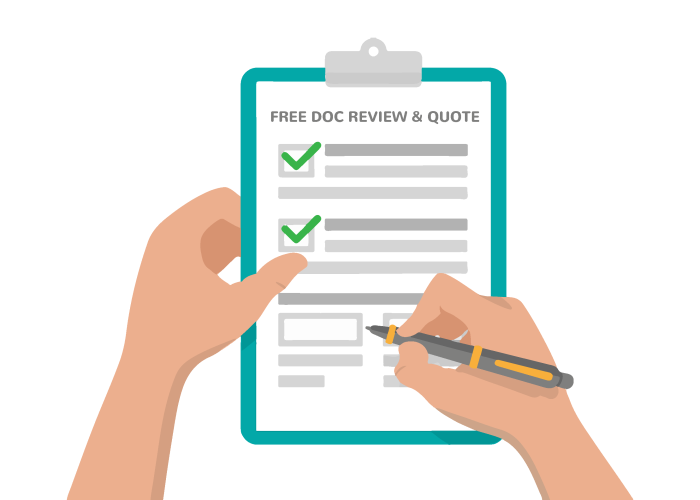Digital accessibility isn’t anything new for many schools in America. Federal law has mandated that schools receiving federal funding make their course material and other digital content accessible to everyone, including people with disabilities, for years. However, the Department of Justice (DOJ) recently updated Title II of the Americans with Disabilities Act (ADA) to expand these requirements to any state and local services, programs, and activities including all public schools.
With new digital accessibility laws under Title II of the ADA on the horizon, educational institutions must prioritize making their digital resources accessible. One critical aspect of this effort is ensuring that PDF documents — a widely used format for academic materials — meet accessibility standards. These fall under the “communicate with people with disabilities as effectively as you communicate with others” aspect of the ADA.
PDF accessibility is an often-overlooked area that can significantly impact students’ ability to access course materials, syllabi, administrative documents, and other critical information. Schools may be tempted to put off PDF accessibility until much closer to the deadline, but PDF accessibility takes time and leaving it until the end is a sure way to miss deadlines.
Why PDF Accessibility Matters?
Portable Document Format (PDF) is a preferred format in higher education due to its versatility, ease of sharing, and ability to maintain a consistent appearance across devices. However, PDFs can present substantial barriers for students with disabilities if they are not designed with accessibility in mind. For instance, PDFs that are scanned images of text are unreadable by screen readers, a vital assistive technology used by students who are blind or visually impaired. Many old or archived PDFs were once scanned, making them inaccessible. Additionally, improperly tagged PDFs can make it difficult for students using screen readers to navigate the content effectively.
Steps to Ensure PDF Accessibility for Title II Compliance
1. Conduct a PDF Accessibility Audit
Start by auditing all existing PDFs available on the institution’s websites, learning management systems (LMS), and other digital platforms. This audit should assess how many documents there are, and how many pages each document contains.
Next, you’ll need to decide which of these documents can be archived or removed (for outdated material that is no longer used), and which will need to be remediated. Some content won’t need to be remediated, per the exceptions listed in the Final Rule. Anything that is outdated, no longer used, and/or archived may be exempt. However, there will be much that doesn’t fall under these exceptions. A good rule of thumb is that if content is being used by more than one person, it probably needs to be accessible.
Finally, you’ll need to determine whether these documents meet the newly required standard, Web Content Accessibility Guidelines (WCAG) 2.1.
Automated tools can help identify common accessibility issues in PDFs, such as missing tags, poor contrast, or lack of text descriptions for images. However, manual testing is also crucial, as automated tools may not detect all accessibility barriers, such as complex tables or improperly ordered content.
2. Prioritize Remediation of Key Documents
Once the audit is complete, prioritize the remediation of PDFs that are most critical for student access and success. Focus on documents that are frequently used, such as course syllabi, application forms, admissions materials, and key policy documents. Additionally, consider the importance of course content, ensuring that lecture notes, reading materials, and other educational resources are accessible.
3. Choose the Right Solution for Remediation
Remediation involves adding proper tags to the PDF, such as headings, lists, and alternative text for images, to ensure that screen readers can interpret the document correctly. While adding tags to a complex tag tree can be difficult and require technical knowledge, the right solution can make it much easier.
Choose a solution that will best suit your documents, your staff, and needs. Many organizations have an abundance of PDFs but not many staff members with the technical knowledge to manually interact with the tag tree of each of those PDFs. Set yourself up for success by choosing a PDF remediation solution that makes accessibility simple and reliable for anyone in your organization.
4. Train Faculty and Staff on PDF Accessibility for Title II Compliance
Providing training for faculty and staff on creating and maintaining accessible PDFs is essential. Ensure that faculty, staff, and administrators are trained in creating accessible documents from the beginning. When creating a new document, it is often easier to start in a word processor like Microsoft Word or Google Docs and ensure that accessibility features (such as headings, lists, and alt text) are properly applied before converting the document to PDF.
However, many documents which started out as accessible Word or Google Docs can “lose” their accessibility upon conversion to PDF. Again, having a PDF remediation solution that is simple to use and reliable is essential.
5. Monitor and Update Accessibility Practices Regularly
Accessibility is not a one-time task but an ongoing commitment. Establish a process for regular review and updates of digital content, particularly PDFs, to ensure ongoing Title II compliance with accessibility standards. Set up a schedule for periodic audits, and use feedback from students with disabilities to identify any continuing barriers.
Use feedback loops, such as surveys or focus groups with students, to gauge the effectiveness of accessibility initiatives and make necessary adjustments.
Make a Plan Now to Prioritize Compliance and Inclusion
With new digital accessibility regulations on the horizon, U.S. colleges and universities must prioritize PDF accessibility to comply with Title II of the ADA. By conducting audits, remediating existing documents, implementing best practices, training staff, and continuously monitoring accessibility efforts, institutions can ensure they are ready to meet the new requirements while fostering a more inclusive digital environment. Taking these proactive steps will not only help avoid legal penalties but also uphold the principles of equity and inclusion that are foundational to higher education.






